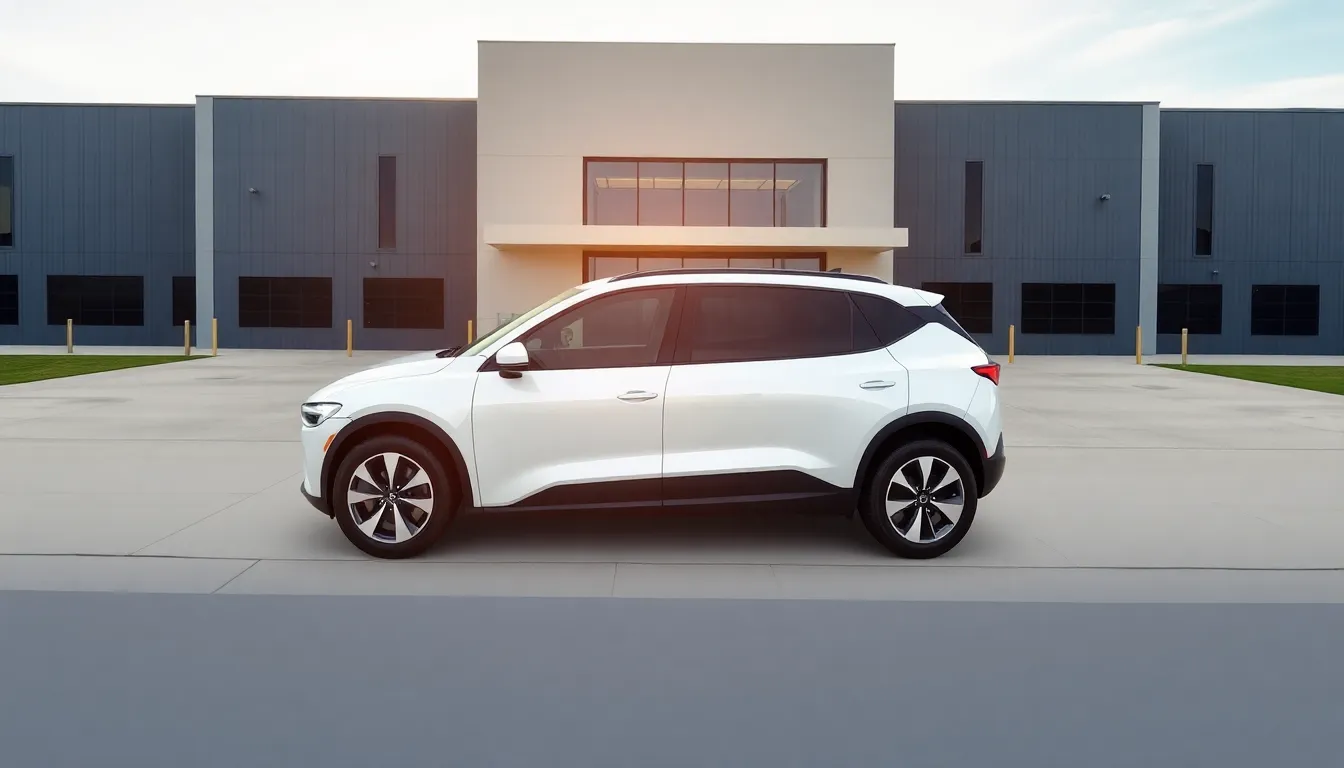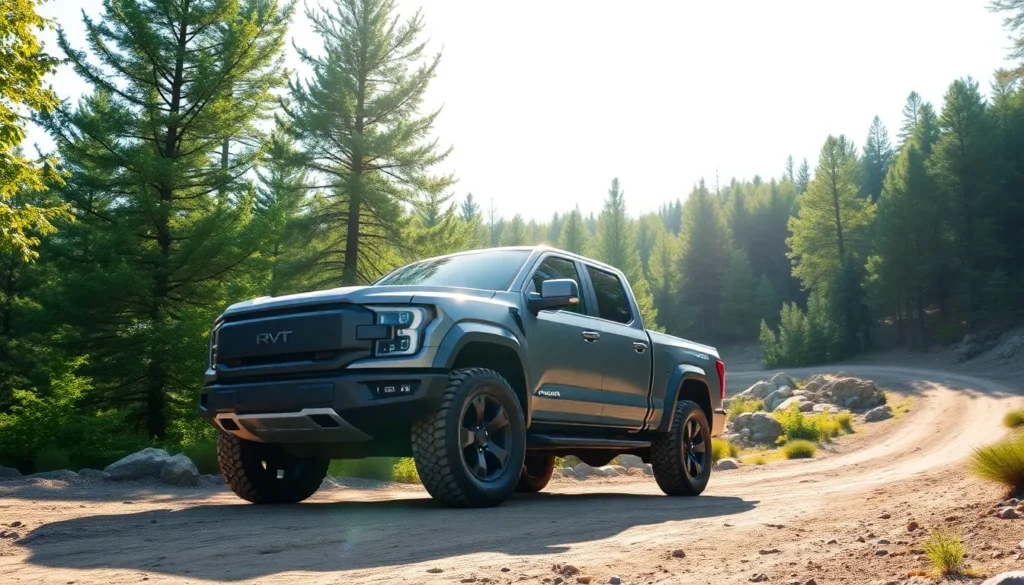Table of Contents
ToggleRivian, the electric vehicle darling that’s been turning heads and raising eyebrows, finds itself at a crossroads. With its sleek trucks and SUVs promising adventure and sustainability, it’s hard not to root for this ambitious startup. But as the automotive world shifts gears, whispers about Rivian’s financial health are getting louder. Is this the end of the road for the EV innovator, or just a pit stop on the way to success?
Investors and fans alike are on the edge of their seats, wondering if Rivian’s journey will hit a speed bump or if it’ll zoom ahead. As competition heats up and production challenges arise, the question remains: is Rivian going out of business or simply navigating a bumpy track? Buckle up as we dive into the twists and turns of Rivian’s story, exploring the facts, the fears, and the future of this electric dream.
Background on Rivian
Rivian stands as an electric vehicle startup, renowned for its innovative trucks and SUVs. The company navigates challenges related to financial health, amid increasing competition and production hurdles.
Company Overview
Founded in 2009, Rivian focuses on developing electric vehicles that cater to outdoor enthusiasts. The R1T and R1S represent its flagship models, combining sustainability with off-road capabilities. They emphasize performance, offering impressive acceleration and range. Rivian’s factory in Normal, Illinois, showcases its commitment to scaling production. Partnerships with major companies, like Amazon for electric delivery vans, highlight its strategic approach to the market. Investors and analysts closely monitor Rivian, as the company’s trajectory directly impacts the electric vehicle landscape.
Mission and Vision
Rivian aims to promote sustainable transportation while enhancing outdoor experiences. The vision centers on creating electric vehicles that reflect the adventurous spirit of its customers. By prioritizing sustainability, Rivian plans to minimize its environmental impact throughout the production process. They focus on innovative technologies that improve performance and efficiency in their vehicles. The mission includes inspiring a new generation of adventurers to embrace eco-friendly mobility. As Rivian continues to evolve, its initiatives underline a commitment to a cleaner future.
Current Financial Status

Rivian faces significant financial scrutiny as it navigates a challenging market landscape. Recent developments indicate the company’s financial health and operational sustainability.
Recent Revenue Reports
Revenue reports reveal an increase in vehicle deliveries, yet the figures fell short of market expectations. In the latest quarter, Rivian reported $1.92 billion in revenue, a notable rise from previous quarters. Despite this growth, analysts express concern about rising production costs and ongoing supply chain issues. The company’s net loss reached $1.6 billion, indicating struggles with profitability. High operating expenses further complicate Rivian’s financial outlook, prompting questions about long-term viability.
Investment and Funding
Investment and funding remain crucial for Rivian’s survival and expansion. As of the latest funding round, the company secured $2 billion from private investors. This capital injection plays a vital role in supporting production ramp-up and new model development. Partnerships with major players, including Amazon, also offer financial backing and stability. However, ongoing discussions indicate potential additional funding might be necessary to address liquidity challenges. Investors closely monitor Rivian’s balance sheet, assessing its ability to sustain operations amidst heightened competition.
Market Position
Rivian’s market position reflects both its innovative spirit and the challenges faced in the competitive electric vehicle landscape. The startup’s journey to establish itself continues as it navigates various obstacles.
Competitors in the EV Industry
Tesla remains a dominant force in the electric vehicle sector. Rivian competes with established brands like Ford and General Motors, which are ramping up their EV offerings. New entrants such as Lucid Motors and Fisker are also gaining attention. Each competitor has unique features that cater to different consumer preferences. Rivian’s focus on adventure-oriented vehicles sets it apart, appealing particularly to outdoor enthusiasts. Despite this differentiation, the pressure from legacy automakers and increasing competition poses challenges for Rivian’s market share.
Consumer Demand and Sales
Growing consumer interest in electric vehicles has created a favorable environment for Rivian’s offerings. Recent reports indicate that Rivian delivered more vehicles in the latest quarter, contributing to $1.92 billion in revenue. Demand for the R1T and R1S models highlights the brand’s appeal among eco-conscious consumers. Challenges remain, however, as sales figures have not met market expectations amidst production constraints. The need for improved supply chain management and manufacturing efficiency is crucial. Investors keep a close eye on Rivian’s ability to convert demand into sustained sales growth, which is vital for long-term viability.
Potential Challenges
Rivian faces multiple challenges that may impact its future. Manufacturing and supply chain issues pose significant obstacles to scaling production.
Manufacturing and Supply Chain Issues
Production inefficiencies have hindered Rivian’s ability to meet anticipated demand. Factors such as component shortages and manufacturing delays affect output levels. The company struggles to stabilize supply chains, which impacts delivery timelines. Constraints in sourcing critical materials also contribute to production slowdowns. Despite recent increases in vehicle deliveries, achieving consistent manufacturing rates remains essential for growth.
Regulatory and Market Risks
Regulatory challenges add complexity to Rivian’s operational landscape. Compliance with evolving environmental standards requires continual adjustments in production processes. Additionally, competition in the electric vehicle sector is fierce, with established brands and new entrants vying for market share. Rivian must navigate these market dynamics while maintaining consumer interest in its adventure-oriented products. Fluctuations in consumer preferences and economic conditions can also pose risks to sales stability.
Expert Opinions
Experts provide vital insights on Rivian’s financial outlook and the electric vehicle market. Predictions from industry analysts suggest mixed sentiments about Rivian’s trajectory amidst competitive pressures and operational hurdles.
Analyst Predictions
Analysts express cautious optimism about Rivian’s potential growth. Market expectations hinge on critical factors such as production scalability and effective supply chain management. Revenue reports indicate a positive trend, with $1.92 billion in the latest quarter signaling demand for its vehicles. Despite this, uncertainties linger due to a reported net loss of $1.6 billion. Some analysts highlight the importance of securing additional investment to maintain operational stability. Investors assess Rivian’s balance sheet as a clear indicator of future viability.
Industry Insights
Industry experts recognize Rivian’s shift toward adventure-focused electric vehicles as a unique selling point. Competition remains fierce from established brands like Tesla and Ford, along with emerging players like Lucid Motors. Supply chain disruptions and manufacturing delays pose significant challenges moving forward. Many suggest that enhancing production efficiency could unlock growth potential. Regulatory hurdles add complexity to Rivian’s operational framework. Addressing these challenges might facilitate better positioning in the evolving EV market.
Rivian’s journey in the electric vehicle market is marked by both promise and challenges. While the company’s innovative approach to adventure-oriented vehicles has garnered attention and interest, its financial health remains a concern. The recent revenue growth is encouraging but hasn’t met market expectations, raising questions about its long-term sustainability.
As Rivian navigates production hurdles and competitive pressures, the need for effective supply chain management and additional funding will be crucial. The coming months will likely determine whether Rivian can overcome these obstacles and solidify its position in the rapidly evolving EV landscape. Investors and enthusiasts alike will be watching closely to see if Rivian’s vision of eco-friendly mobility can withstand the challenges ahead.




